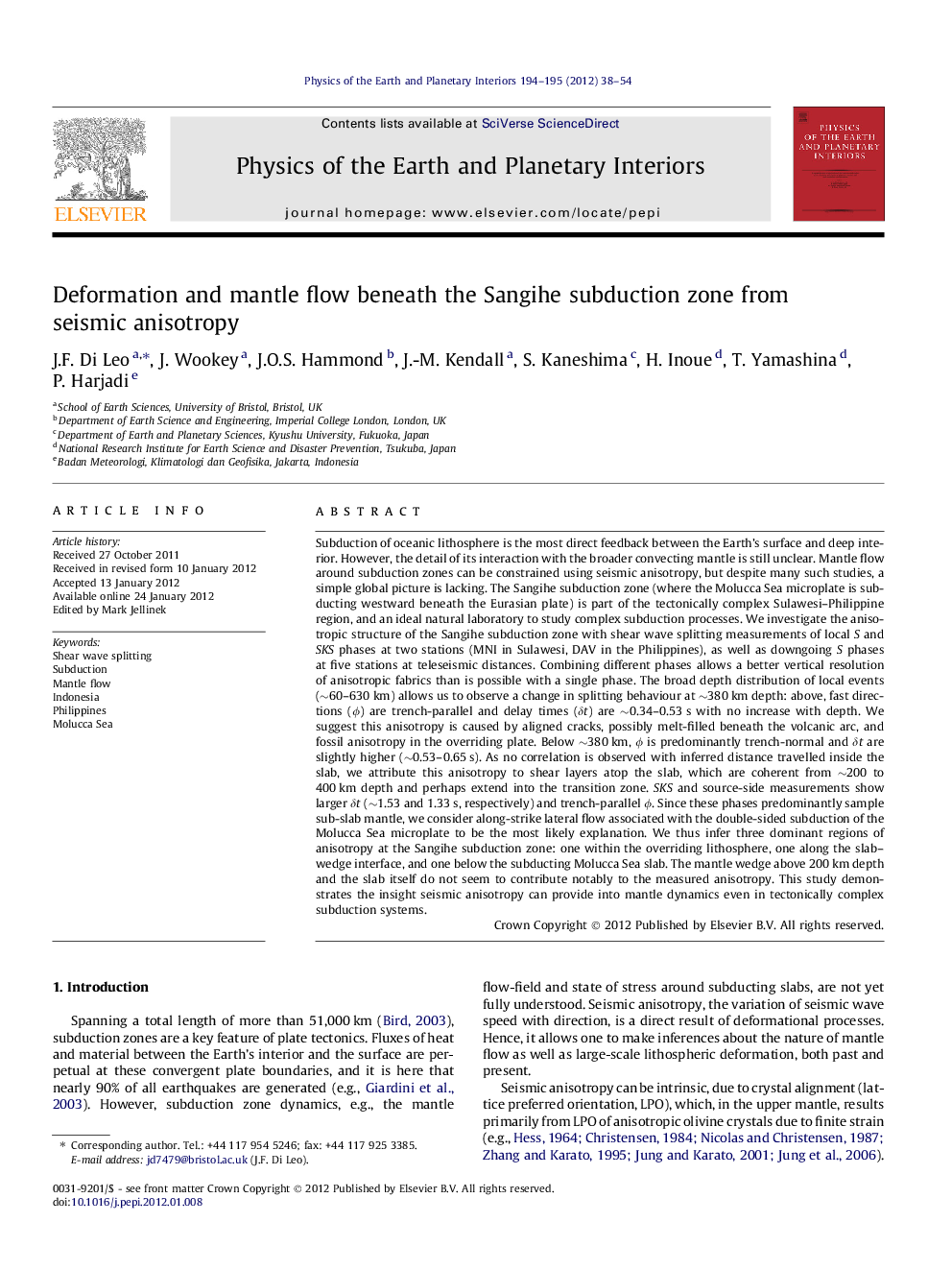| کد مقاله | کد نشریه | سال انتشار | مقاله انگلیسی | نسخه تمام متن |
|---|---|---|---|---|
| 4741845 | 1641537 | 2012 | 17 صفحه PDF | دانلود رایگان |

Subduction of oceanic lithosphere is the most direct feedback between the Earth’s surface and deep interior. However, the detail of its interaction with the broader convecting mantle is still unclear. Mantle flow around subduction zones can be constrained using seismic anisotropy, but despite many such studies, a simple global picture is lacking. The Sangihe subduction zone (where the Molucca Sea microplate is subducting westward beneath the Eurasian plate) is part of the tectonically complex Sulawesi–Philippine region, and an ideal natural laboratory to study complex subduction processes. We investigate the anisotropic structure of the Sangihe subduction zone with shear wave splitting measurements of local S and SKS phases at two stations (MNI in Sulawesi, DAV in the Philippines), as well as downgoing S phases at five stations at teleseismic distances. Combining different phases allows a better vertical resolution of anisotropic fabrics than is possible with a single phase. The broad depth distribution of local events (∼60–630 km) allows us to observe a change in splitting behaviour at ∼380 km depth: above, fast directions (ϕϕ) are trench-parallel and delay times (δtδt) are ∼0.34–0.53 s with no increase with depth. We suggest this anisotropy is caused by aligned cracks, possibly melt-filled beneath the volcanic arc, and fossil anisotropy in the overriding plate. Below ∼380 km, ϕϕ is predominantly trench-normal and δtδt are slightly higher (∼0.53–0.65 s). As no correlation is observed with inferred distance travelled inside the slab, we attribute this anisotropy to shear layers atop the slab, which are coherent from ∼200 to 400 km depth and perhaps extend into the transition zone. SKS and source-side measurements show larger δtδt (∼1.53 and 1.33 s, respectively) and trench-parallel ϕϕ. Since these phases predominantly sample sub-slab mantle, we consider along-strike lateral flow associated with the double-sided subduction of the Molucca Sea microplate to be the most likely explanation. We thus infer three dominant regions of anisotropy at the Sangihe subduction zone: one within the overriding lithosphere, one along the slab–wedge interface, and one below the subducting Molucca Sea slab. The mantle wedge above 200 km depth and the slab itself do not seem to contribute notably to the measured anisotropy. This study demonstrates the insight seismic anisotropy can provide into mantle dynamics even in tectonically complex subduction systems.
► We show the advantages of combining different shear phases in splitting analysis.
► We detect three distinct domains of seismic anisotropy at the Sangihe subduction zone.
► We show that coherent anisotropic fabrics form even in complex tectonic settings.
► This is the first seismic anisotropy study of the Sangihe subduction zone.
Journal: Physics of the Earth and Planetary Interiors - Volumes 194–195, March 2012, Pages 38–54